The Ashikaga Park, located in the immediate vicinity of Nikko, less than two hours by train from the center of Tokyo, is a true paradise of wisteria trees. It will bring joy to flower lovers!

The promised land of Wisteria trees
Wisteria, also known as the “Fuji flower,” is a highly prized tree in Asia for its long clusters of colorful flowers that bloom in the spring. The Japanese celebrate and create sanctuaries around these trees throughout the country, especially for the older ones. Ashikaga Park houses one of the most famous wisteria trees, which is almost a century old! They can be very impressive, both in height and width. Some even need to be supported by wooden pillars to prevent them from bending under their weight.
Tourists do not hesitate to travel to admire the cascades of violet, pink, or white wisteria flowers all over the country. Although it is difficult to find them in central Tokyo, it is possible to visit Ashikaga Park, one of the most beautiful floral parks in the region, to admire them. This park has several dozen varieties of wisteria, with about 350 trees. It’s definitely worth a visit! However, be aware that you will probably not be alone: many Japanese and Chinese tourists visit in May, just after the beautiful cherry blossom season.

Wisteria artworks
Observing flowers is a true passion among the Japanese, as evidenced by the tradition of hanami (the famous picnic organised under blooming cherry trees). To ensure visits at the optimal flowering time, the park team regularly updates photos of the wisteria trees on the Ashikaga Park website. A very practical initiative not to miss this major event in the plant world, isn’t it?
The different varieties of wisteria bloom one after the other in April and May: first the white, then the pale pink, the violet, and finally the yellow. It is therefore possible to admire the flowering for several consecutive weeks! The wisteria trees are wonderfully highlighted: pink wisteria bridges, violet ceilings extending over tens of square meters, and tunnels buried under flowers allow visitors to observe the hanging clusters from all angles. While it obviously delights Instagrammers now, and nature photographers before them, it is above all a testament to the artistic talent of the landscapers and gardeners of Ashikaga.
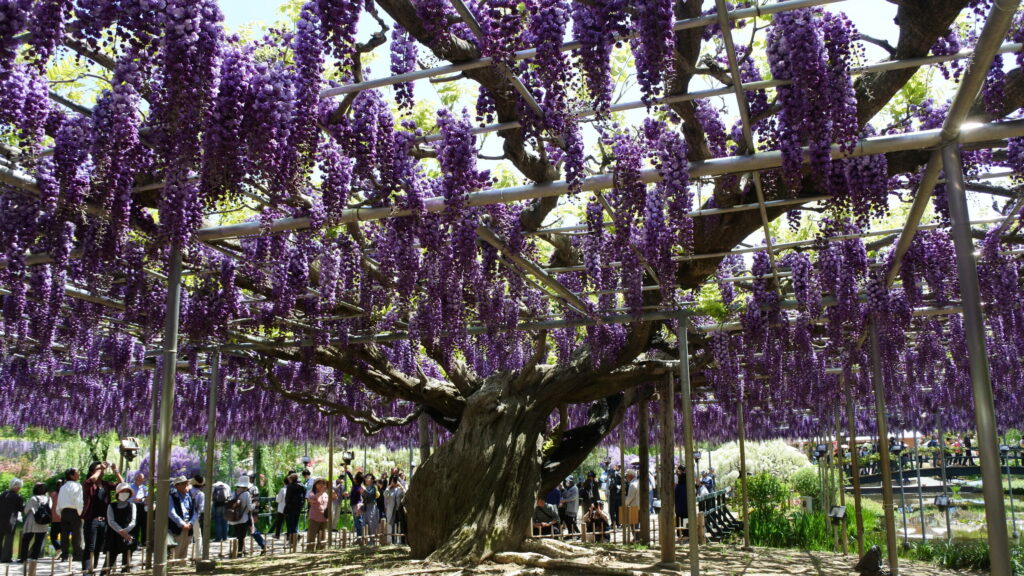
With each season, a new garden
More than just a simple wisteria park, in my opinion, Ashikaga Park is a living work of art. It reinvents itself over the seasons, thanks to the skill of artist-gardeners. If this seasonal evolution is typical of the approach to Japanese gardens, it is particularly well-crafted at Ashikaga: throughout the year, visitors can discover different floral treasures. This is not only smart from a tourism point of view (there is something to see all year round), but also reveals the mastery of gardeners, who are able to preserve the beauty of a place despite changing conditions.
At Ashikaga, after the wisteria, the water lilies and tropical plants take over. In total, the garden offers no less than eight “flower seasons,” each with its own colors and atmosphere. Visitors can thus enjoy the “Spring Flower Festival” with tulips in March-April, the “Wisteria Tale” in May, then the “Rainbow Garden” with roses and clematis in full bloom, and so on until winter. Isn’t this a true testament to the Japanese passion for flowers?
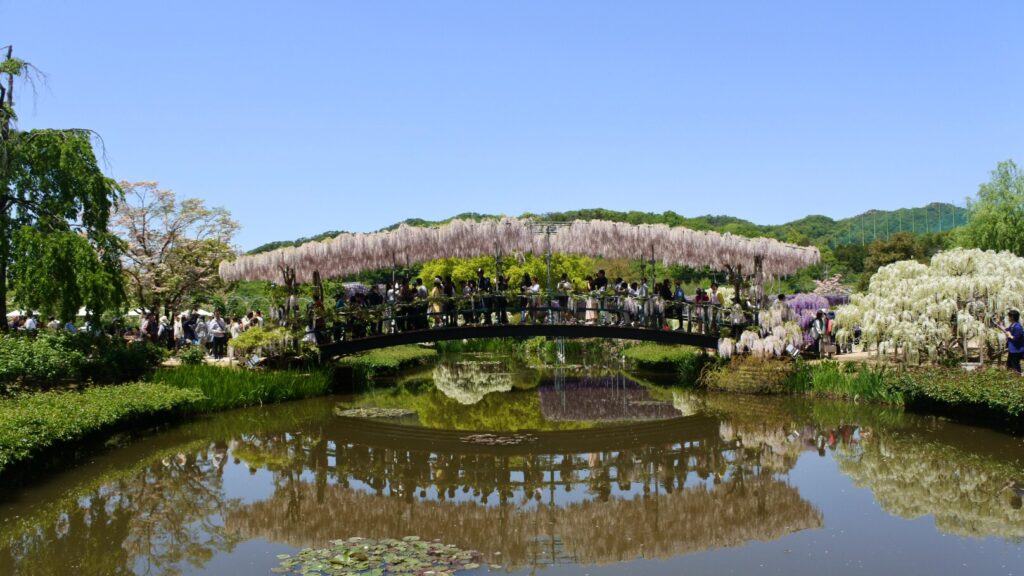
Ashikaga Flower Park: practical information
How to get to Ashikaga Park?
The nearest train station is Tomita. Take the JR Ryomo Line, accessible from the Yamanote Line in Tokyo
When to visit Ashikaga Park?
From March to October: 9am – 6pm and from November to February: 10am – 5pm. Be sure to check the website to stay informed about the flowering seasons.
Address
607 Hasama-cho, Ashikaga city, Tochigi Prefecture 329-4216
Fees may vary depending on the season.
Website & Social Media
https://www.ashikaga.co.jp/english/
Instagram: @ashikaga_flower_park
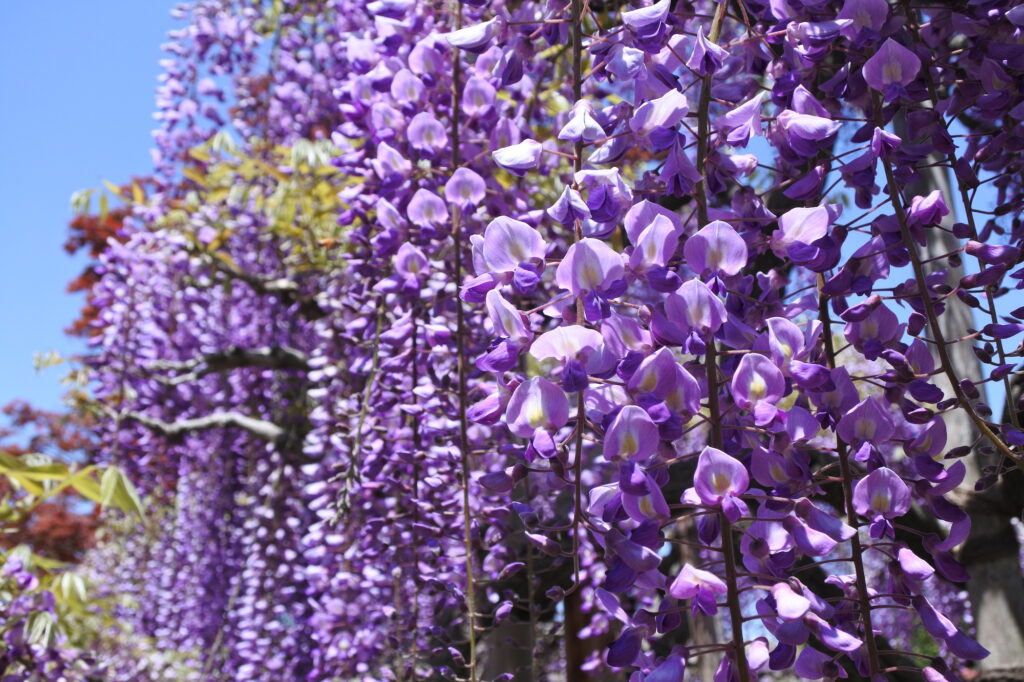
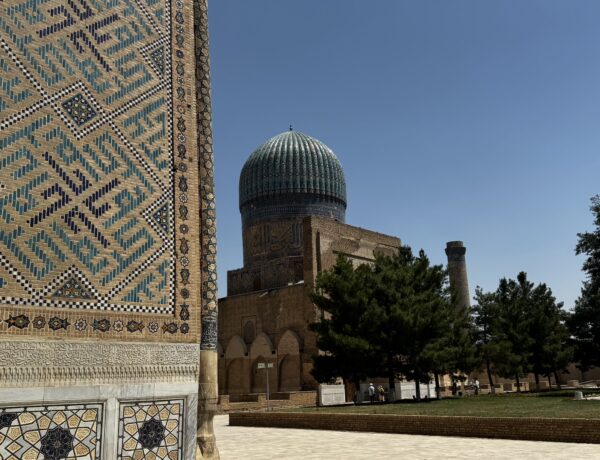
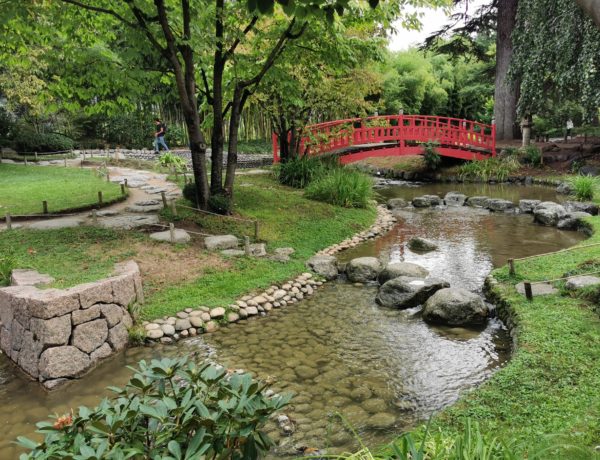

No Comments